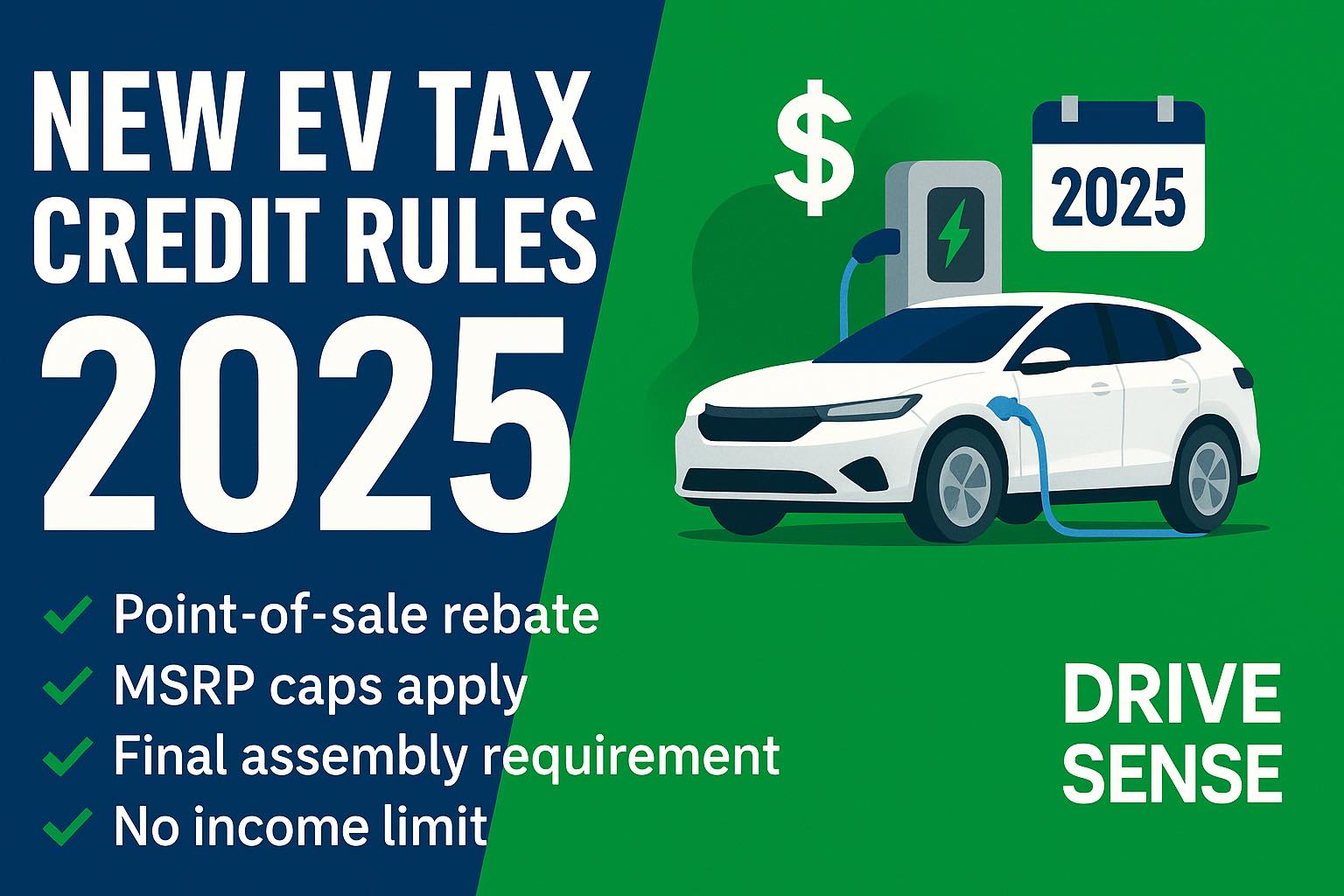The EV Tax Credit Landscape Shifts Again
For anyone tracking the pulse of electric vehicle adoption in the United States, the federal EV tax credit has long been a north star—sometimes shining, sometimes clouded by legislative haze. With new rules set to take effect in 2025, the landscape is set for another seismic shift. Sitting in my San Francisco home office, surrounded by charging adapters and a drawer full of key fobs, I’ve spent hours poring over official documents and automaker releases. Here’s what’s actually changing, and how it might affect both buyers and the industry at large.
What’s Changing in 2025?
The Inflation Reduction Act (IRA), signed into law in August 2022, marked a turning point for federal EV incentives. The act restructured the Section 30D Clean Vehicle Credit, which has been the main avenue for up to $7,500 in tax credits on qualifying new electric vehicles. Starting January 1, 2025, a few key updates will take effect:
- Point-of-sale credit: Buyers will be able to apply the tax credit directly at dealerships as a discount on the purchase price, rather than waiting until tax season. This is a significant shift—one that could make EVs feel more attainable at the moment of sale.
- Tighter sourcing requirements: Eligibility hinges even more strictly on battery components and critical minerals being sourced from North America or U.S. free-trade partners. Vehicles with batteries from “foreign entities of concern”—primarily China—will be excluded.
- Income and price caps remain: The rules maintain caps: $55,000 for cars and $80,000 for trucks/SUVs/vans, and income limits of $150,000 (individual) or $300,000 (joint filers).
These rules were widely reported by outlets like The Wall Street Journal and Reuters as of mid-2024. The Department of Treasury released guidance confirming that these changes would roll out for vehicles delivered in 2025 and beyond.
The Details: Who Qualifies Now?
The new sourcing requirements are where things get tricky—and, frankly, frustrating for some would-be EV owners. In late 2023 and early 2024, several popular models lost their eligibility as automakers scrambled to shift supply chains away from Chinese battery suppliers. As of June 2024, only a handful of models—such as some versions of the Tesla Model Y, Chevrolet Bolt EUV, Ford F-150 Lightning (with U.S.-sourced batteries), and select Rivian R1T/R1S trims—qualify for the full credit.
For 2025, it’s expected that even fewer models will be eligible initially. Automakers like Hyundai and Volkswagen are racing to open North American battery plants; GM and Ford have already begun retooling supply contracts. But supply chains don’t pivot overnight. If you’re eyeing a new EV next year, check the IRS list before setting your heart on a particular badge or trim.
Dealerships Take Center Stage
I’ve spent enough time in Bay Area showrooms to know that sales staff can make—or break—the excitement around EVs. The new point-of-sale structure puts dealerships front-and-center in administering credits. This means more paperwork handled at the time of purchase, but also less uncertainty for buyers who may not have owed enough federal tax to claim the full credit previously.
The catch? Not all dealerships may participate immediately. The Treasury requires dealers to register with an online portal to process credits in real time. If you’re shopping early in 2025, it’s worth calling ahead to confirm your dealer is set up for instant rebates.
The Ripple Effect: Will Prices Fall—or Rise?
There’s cautious optimism among consumer advocates that point-of-sale credits will expand access to EVs—especially among buyers who might not have had enough tax liability to benefit before. That said, there’s skepticism too: Will automakers simply adjust MSRPs upward to absorb some of the incentive? So far, most manufacturers haven’t announced plans to change pricing strategies due to the rule change alone.
I remember test-driving a Chevrolet Bolt EUV last year; its low sticker price plus the credit made it feel like a bargain compared to even mid-tier compact gas crossovers. If eligible models dwindle further in 2025 due to battery sourcing rules, we could see discounts evaporate—at least temporarily—until supply chains catch up.
Comparing Today’s Choices: Gas vs Electric
The contrast between today’s gasoline cars and their electric counterparts remains stark—not just at the pump or plug, but at the register too. A base Toyota Corolla might be quieter inside than some entry-level EVs at highway speed (the hum of an unladen Leaf still lingers in my memory), but lower running costs and instant torque keep drawing Americans toward electrics.
However, if only premium or specialized EVs qualify for credits next year due to supply chain constraints, mainstream adoption could stall—or at least slow—despite all the buzz around sustainability and performance improvements.
Charging Infrastructure: Still Catching Up
No discussion about EV adoption is complete without touching on charging. The Biden administration has committed billions toward expanding fast-charging networks nationwide through programs like NEVI (National Electric Vehicle Infrastructure). Still, range anxiety remains real—I’ve felt it firsthand crossing stretches of California’s Central Valley with fewer plugs than rest stops.
If federal incentives succeed in driving up demand while infrastructure lags behind (especially outside major metro areas), there could be growing pains for both new owners and grid operators alike.
The Road Ahead: Cautious Optimism
The new 2025 rules around EV tax credits are both a carrot and a stick—rewarding local investment while pushing manufacturers out of old supply chain habits. For buyers ready to make the leap into electrification next year, diligent research will be more important than ever: check eligibility lists often; ask dealers about point-of-sale options; watch for model updates as automakers race to qualify under the stricter criteria.
Ultimately, while there’s plenty left uncertain—including which models will definitively qualify come January—the direction is clear: cleaner cars built closer to home are getting a policy boost. Whether that translates into affordable driveway options or just more red tape remains to be seen—but I’ll be watching closely from here in San Francisco.
